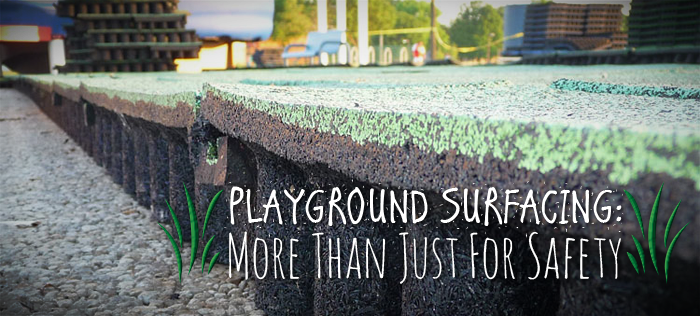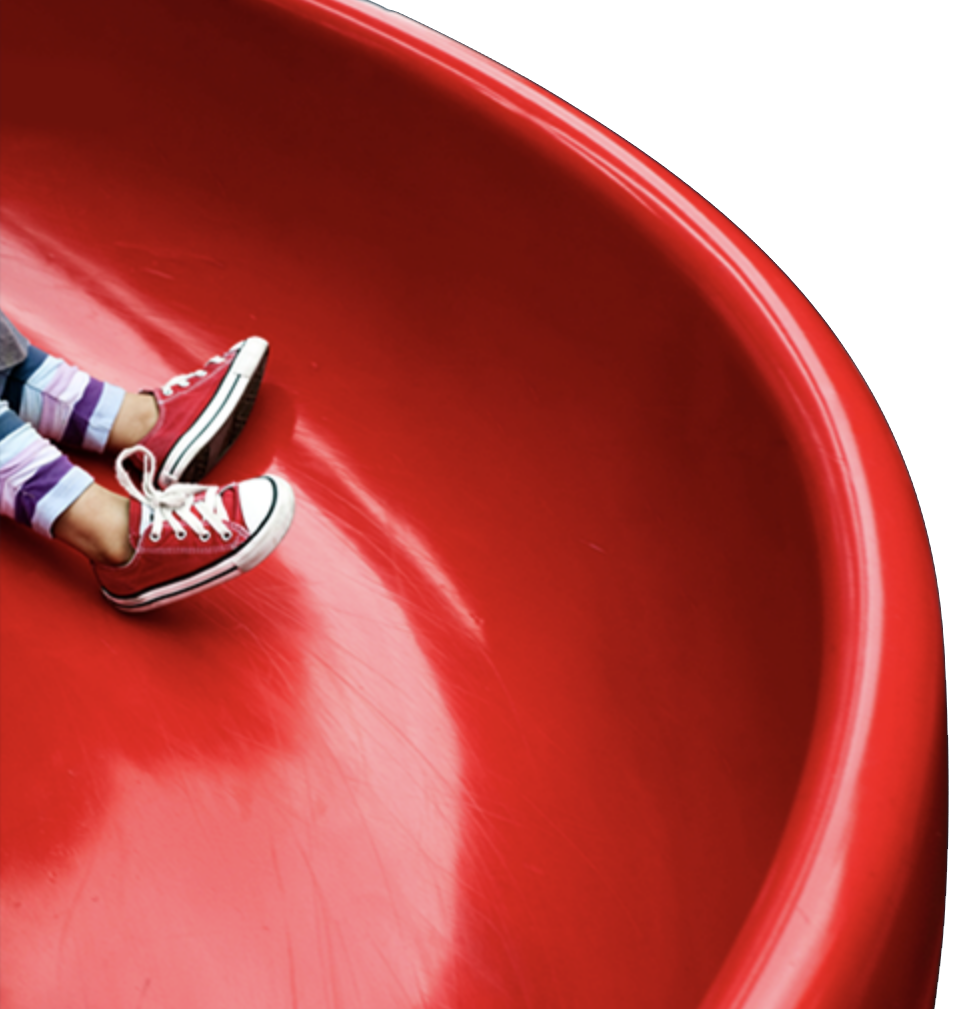Playground Surfacing: More Than Just for Safety

If you are selecting commercial playground equipment, it is important to review the safety specifications for one of the most important elements that will reduce injury risk – the safety surfacing material. It is also crucial to consider a material that will allow everyone, regardless of their ability, to be able to enjoy your playground.
When choosing playground surfacing material, most casual consumers generally only consider cost and aesthetics, but there are a number of factors that you should be aware of to make sure you are selecting the best playground surfacing option available for your budget.
These are all important factors to consider when purchasing playground surfacing:
- Safety and injury prevention (impact attenuation).
- ADA accessibility for children with special mobility needs.
- If the material requires general maintenance or not.
- How the surface will hold up in your area’s climate.
- How long the warranty will last.
All playground surfacing types offered by All People Can Play are compliant to the American Section of the International Association for Testing Materials (ASTM), and provide protection from fall and tripping injuries for children at play. Visit the website for more information on the ASTM regulations pertaining to playground surfacing.
ADA Accessibility and Playground Surfacing
In 2011 it was estimated that there were more than 2.8 million elementary school aged children with mobility needs in the United States (approximately 1 in every 7 families). These children require engaging physical fitness activities which are ADA accessible in order to promote good health and wellness, as well as for development of social and cognitive skills.
For children with mobility restrictions, the ability to enjoy the benefits associated with free play is dependent upon the age of school and public playgrounds within their communities. New commercial playground equipment is designed with ADA accessibility in mind, and the number of communities who have replaced old, dated, and inaccessible equipment continues to grow every year. But the predominant factor that limits children with special needs is playground surfacing.
Sand and pea gravel – which are acceptable for impact attenuation – are unacceptable to ADA standards due to the fact that the materials are not firm and tend to displace. While wood fiber fill is a popular (and economical choice) it can limit accessibility for children in wheelchairs if it is not regularly maintained and leveled. And, while they can be assisted to access the playground area, surfacing that restricts access prevents independence for children who rely on mobility devices such as canes, wheelchairs, crutches, scooters or other devices.
Did you know that playground surfacing requires regular inspection and maintenance? Frequently older surfacing can present hazards as it becomes overly compacted or damaged during normal use. Loose fill options like engineered wood fiber can require annual (or even more frequent) maintenance and refill, whereas rubber mulch may only require leveling annually, but refill after a period of say 5 years. Rubber safety tiles or poured-in-place rubber surfacing options may only need to be repaired in smaller areas where potential trip or fall injuries are a result of loose or cracked material.
At All People Can Play we offer a number of quality playground surfacing options to suit your needs and budget. Call us at 1-888-404-4416 to speak to one of our playground specialists and we’ll talk you through all the options and considerations mentioned above. We’ll help you make the most economical decision that will also provide you with the most important features to you.


